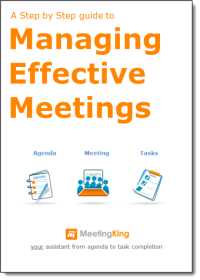
Meetings are an essential part of any working environment, be it a big corporation, a small business, a non-profit, or a church community. Sometimes, however, it might feel like you have too many meetings and not enough time to fulfill your responsibilities.
For this reason, we created a meeting planning checklist that helps to determine if a meeting is necessary or if you could get away with a simple email. Let’s look at the first 5 ideas on this list.
The Urgency of The Meeting
The first question to ask yourself to define if the meeting is needed is, “How urgent or time-sensitive is the matter?”
If there’s no immediate issue that needs to be discussed, the meeting can wait for a time that is convenient for the team members who need to attend. Especially, if it is the end of the quarter. Finding a suitable time for attendees, not only yourself, shows that you value their time and that you are mindful and considerate.
On the other hand, if there is a serious situation, like a safety issue or security breach, having an urgent meeting might be the best option. This way you can get everyone informed immediately and decide on the necessary actions to be taken. Such meetings can prevent serious situations from escalating. This is why timing is crucial.
Time Needed to Prepare for The Meeting
Productive and efficient meetings require preparation. You need to define your agenda (having a template is the best option) and make sure you have everything ready in advance before you send the invites.
You also need to consider your team’s availability. Are some of your colleagues working on an important project that needs to be finished within a tight time frame? To avoid low attendance or putting your team members under stress, check people’s availability first (using a poll is an excellent option) and then decide the best time for the meeting.
The Length of The Meeting
When you consider scheduling a meeting, you should think about the agenda. Are all the items on the meeting agenda related? How much time do you need to address each point?
If your meeting agenda has a few different subjects you want to discuss, it’s better to organize separate meetings. This way, participants will be more productive and you will avoid unnecessary confusion. It could also help to ensure that the right people attend the right meetings.
Pro tip: Focus on the purpose of the session; be direct and specific to make the most out of your meeting and you will save valuable time.
The Frequency of The Meeting
Some meetings only need to happen once while others, like monthly reports or quarterly reviews, are recurring. If you have periodic meetings, consider how often you need to hold them and if some of them could be replaced using virtual elements. For example, perhaps it’s enough to use a virtual whiteboard to brainstorm some ideas or have an online meeting instead of meeting in person. Maybe your weekly status update only needs to happen every other week? A lot of time can be saved by simply sending an email and asking for feedback.
The Use of Video Meetings
When the pandemic hit the world, the way we approach work was impacted dramatically. We had to learn how to work from home and use video conferencing to communicate with our colleagues.
Virtual meetings shouldn’t be forgotten, as it allows you to include remote teammates and you have a chance to record the whole meeting for those who could not participate.
Some meetings are a must while others are redundant, can be postponed, or their format can be changed. When you are trying to decide if the meeting is necessary, keep in mind the urgency, preparation required, length, frequency, and possible integration of video conferencing. By keeping these things in mind, you will save time, have more effective meetings, and ultimately, have a happier team.
___
The image above by rawpixel.com on Freepik


